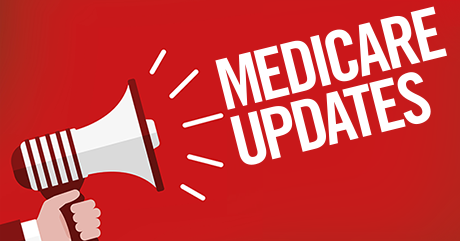New Stuff From Medicare
Two Updates
Two recent Medicare updates carrying a potential impact on your EMS agency’s cash flow, complete with compliance implications popped up on our radar screen recently. Today’s blog will focus on those two updates.

MUEs
The Centers for Medicare and Medicaid Services recently updated the list of what they call the Medically Unlikely Edits (MUEs).
The MUE program is just one more way for CMS to attempt to reduce the Medicare Part B paid claims error rate. The program was instituted in 2007 under the National Correct Coding Initiative but ambulance MUEs were not added until just this year.
The program works in this manner. CMS estimates the maximum number of units of service that an ambulance service would reasonably report under usual circumstances for a single patient on a single date of service. Once they have arrived at the number for each billing level, they then are instructing the Medicare Administrative Contractors (MACs) to configure their electronic claims processing systems to including these limits.
Any ambulance procedure codes in excess of the set MUE value limits will be denied on first pass. Of course, an ambulance service can always appeal the decision by explaining unusual circumstances.
Thresholds
The MUE thresholds by code and maximum number of units of service per day, per patient for ground ambulance are as follows…
| A0425 | (Mileage, per loaded mile) | 250 miles |
| A0426 | (ALS Non-Emergency) | 2 |
| A0427 | (ALS 1 Emergency) | 2 |
| A0428 | (BLS Non-Emergency) | 4 |
| A0429 | (BLS Emergency) | 2 |
| A0432 | (Paramedic Intercept- NY State) | 1 |
| A0433 | (ALS 2) | 1 |
| A0434 | (Specialty Care Transport) | 2 |
Get Your Ducks in a Row!
Obviously the spotlight is heavily on the repeat patient and on those EMS agencies that are trying to bill unusually excessively. However, we all know that there are times when a patient transport scenario will exceed these limits.
It goes without saying that when your patient transports exceed these thresholds for a patient on any one given day, you will need adequate detailed documentation (where have you heard that one before?) to make the case to the MAC that there are unusual circumstances that they must consider.
Get your ducks in a row!
Your call intake process must ask the right questions and anticipate when a patient is probably going to exceed the threshold limits. Call Intake can foresee this, alert your agency’s admin and operations personnel so they can adequately document the special needs of your patient prior to the billing office receiving the information to initiate a claim.
Communication at all levels is going to be key!
Palmetto GBA and Railroad Medicare Pre-Pay Reviews
The other notable item that crossed our desk this week was the notice from Railroad Medicare MAC, Palmetto Government Benefits Administrators regarding pre-pay audits for BLS non-emergency ambulance claims for the period of October 2016 through September 2017.
This isn’t earth-shattering news as Palmetto’s claims payment error rates have been particularly high, historically. In an effort to curb those numbers, Palmetto has been more and more aggressive with their audit activity, moving more and more to prepayment reviews.
Prepayment reviews slow cash flow. Period.
Under normal circumstances a clean claim submitted electronically to a MAC is typically adjudicated on a 14-day payment floor. Claim submitted. Claim processed. Denial or payment (hopefully payment) issued in two weeks.
End of story.
Not so in the prepayment world.
Claim submitted. Request issued by Palmetto for supporting documentation to review said claim. From the point that Palmetto receives the requested supporting claim documentation, they have thirty days to review the claim and make a determination.
The 14-day payment window now just turned into 30-plus days depending on how long it takes you agency to submit the documentation.
What to Do?
Again. Documentation is key. To prove the medical necessity and reasonableness of the BLS Non-Emergency claim be sure that your crew members are alert to including clear, clinical and precise documentation in the Patient Care Report.
Plus, remember that Palmetto requires that all crew members for the run sign-off on the PCR and be certain there is a valid authorization signature by the patient or a patient representative. The Physician Certification Statement must be in place and it must be properly executed.
Of course, the goal is to submit every piece of supporting documentation you can provide for the claim to adjudicate successfully the first time.